Eric Younkin – LIVE from MTL Holdings HQ! - PODCAST TRANSCRIPTION
September 18, 2023 at 3:00 p.m.Editor's note: The following is the transcript of a live interview with Eric Younkin from MTL Holdings. You can read the interview below, listen to the podcast or watch the video.
Heidi J. Ellsworth: ... CoffeeShop. We're live. Yep. We are live in Waukesha, Wisconsin at the MTL Holdings Corporate Headquarters, and I am here with Eric Younkin. Did I say that right?
Eric Younkin: Yep. Younkin.
Heidi J. Ellsworth: Yep. Younkin. I am here with Eric Younkin, and we are live on YouTube to talk about the RT3 meeting and what in MTL Holdings is doing with the technology. You guys are just amazing. This has been-
Eric Younkin: Thank you.
Heidi J. Ellsworth: ... just a wonderful visit.
Eric Younkin: Awesome. Yeah, we're glad to have you.
Heidi J. Ellsworth: So let's start out with an introduction. Can you introduce yourself, tell everybody about you?
Eric Younkin: Eric Younkin. I'm the vice president of Products and Engineered Services here at MTL, been in the roofing industry since the late 1990s. So been doing this a while. It's been a great career, a great industry to be in and really today was really exciting talking about innovation technologies, what we can do to help the industry. So I'm sure you're going to ask me more about that, but yeah, really excited about that.
Heidi J. Ellsworth: Yeah. Actually, before we get to that, because I really want to talk about RT3 Roofing Technology Think Tank, but can you tell us a little bit about MTL Holdings first?
Eric Younkin: Sure. MTL is basically a company of three brands. We're going to talk about Metal-Era has been in business since the early 1980s. Premier manufacturer of perimeter edge systems, that's spacious, copings, gutters, and downspouts. Also, we have the Hickman Edge Systems brand. So those two are the together are the number one, number two most specified edge metal systems out in the marketplace.
Heidi J. Ellsworth: I love it.
Eric Younkin: And then most recently we added Citadel Architectural Products to the family and they're a manufacturer of ACM or MCM panels, so Aluminum Composite or Metal Composite Materials for the outside of the building envelope. So wall systems also interior uses. So we get into some specialties, ambulances, things of that. But yeah, so it's our first step off of the edge.
Heidi J. Ellsworth: Yeah, off the edge. I like it on the building envelope there or around it. I have to tell you just Metal-Era, Hickman, such great names, such great brands. Citadel we're getting to know. I actually worked with Hickman many years ago with Scott Hickman, so I've just been a fan and I've worked with Metal-Era for so many years. And so being here today and doing the plant tour, really getting to hear about all the new technology, the stats, what's happening, how these companies are making such a difference with the labor shortage too. It was really impressive.
Eric Younkin: Well, hopefully, we showed it today on our plant tour. It's really through our use of robotics, been using robotics since the early 2000s and 65% of our products are manufactured robotically. That means a couple of things. One, it's precision. It's really, we have what we call our spec promise, which is speed, protection, expertise, and quality.
Heidi J. Ellsworth: It was everywhere. We saw it everywhere. You guys are so great at messaging.
Eric Younkin: And so really what the robotics does is speed. It doesn't speed it up, but it's a continuous process. So on our one machine every 45 seconds, we're going from basically a blank raw material shear bent all the way down to a finished good. So it's very consistent. That's where we get our speed. That helps us build our inventory. 65% is manufactured robotically of that 65%, a vast majority of that is next day shipped.
If you order today, we can get that out the door next day.
Heidi J. Ellsworth: Jesus.
Eric Younkin: So the other 35% is more what I would say custom parts. A lot of copings wall variations, not only the wall width but the face heights on the inside and outside. So those are hard to manufacture and stock. So that's probably the other 35%. So the robotics really does it. Like I said, 65% is done robotically and managed through a minimal number of folks in the shop. Then that allows the other folks to go out and do the accessories and the other custom parts.
Heidi J. Ellsworth: And what I saw out there, you just can't imagine this. It's robotic arms that are moving, breaking, forming, doing all those things all from a coil, the coil comes in. But also, throughout the plant it's not just the robotic arms. There are all kinds of different automations and processes and continuing improvement that come from the employees.
Eric Younkin: Yes, absolutely. Actually, every year we have the Gene Mallinger Innovation Award, and we really pride ourselves on listening to our employees and letting them give us ideas. Even when you go to the picking of our materials, our combine lifts and how do we get in, and get our materials out. And you go through the plant and as you went through today, they start you at one end and you'll see that there's a very precise flow from the raw material all the way out to the shipping department. And that's how you walk through the plant. It's designed that way so that way we can make flow easy. And with as much material as we have going back and forth, not a lot of tow motor traffic. So we're trying to minimize it. And the other thing is we talk about the robotics and I'm sure Brad shared it with you on the tour, our QC checks.
Heidi J. Ellsworth: Oh, yes. It was...
Eric Younkin: So when we pull these parts off or when the robot pulls us off of the machine and we actually go through some QC checks and we know right away, boom, red light shut down. So QC consistently done so that way we're not running large amounts of products. So that's another part of that spec promise.
Heidi J. Ellsworth: I think that was one of my favorite parts is when you actually had one robotic arm handing it to another robotic thing and it was taking pictures of it and turning it around and then putting it back, and it was really impressive.
Eric Younkin: Yeah. And that's what I think a lot of people don't get to see. And when they come visit, do a plant tour and trust me, we encourage you, come join us. We'd love to have you.
Heidi J. Ellsworth: Well worth it. So great.
Eric Younkin: When you see that everybody's like, "Wow." Contractors that may have their own shop, they might say, "Man, I see where I can use you in certain instances or for these types of cases." Because we understand contractors might bend their own metal, that's fine, but hey, you might have an instance where it makes sense. And so I think it's really cool and everybody that comes through, they walk away. And even today, some of the contractor's part of RT3, they're like, "That was really cool." So you wouldn't expect that.
Heidi J. Ellsworth: And one of the things I really liked is the story or the... Yeah, you'd call it a story that Brad told about the contractor who had a full sheet metal shop. But was able working with Metal-Era and Hickman was able to actually repurpose the metal shop to do other things and get all the accessories, metal edge, everything that he needed faster.
Eric Younkin: Yes. So there are contractors that, like you said, do have their own metal shops that could say I don't have enough capacity in my shop to do everything I need. So if you can help do these things that can free up their labor to not only do that, but maybe get them on the roof and actually become a profit center so they're actually installing. Because let's face it, in the industry, labor is a huge concern.
So if we're able to repurpose labor to help the contractor, that's just going to make things a lot easier. Then the design behind most of or all of our products is really how do we save the contractor money? You learned today about our XL gutters. Contractor feedback is 60% labor savings. So you couple that with us taking on the manufacturing of it, we're hopefully giving them the opportunity to really reinvest their labor, like I said, onto the roof, onto being a profit center for them.
Heidi J. Ellsworth: I think in Brad's numbers, it was over 2200 by what Metal-Era and Hickman are doing, or MTL Holdings is really is actually saving 2200 jobs.
Eric Younkin: We believe that if you took the whole edge metal market based upon what the industry says is the annual square footage and if we could extrapolate that out into what we think the perimeter edge opportunity is, if we manufacture the perimeter edge metal for the industry, we would save 2200 jobs.
Heidi J. Ellsworth: That's incredible-
Eric Younkin: That's a lot of jobs.
Heidi J. Ellsworth: That's a lot of jobs. When we're in such shortage and looking. It's incredible. The other thing, Eric, that we talked about today that I found fascinating was really talking about building codes. And just the importance of as an industry really not only meeting building codes, but really taking it to that next step to save lives and risk mitigation in that. So maybe talk a little bit about that.
Eric Younkin: Yeah, so risk mitigation is an interesting topic for us to talk about. There's a lot of stats we have through Factory Mutual, other insurance companies where they understand when it comes to roof failures, a vast majority, 60%, is caused by perimeter edge failure. And there's some insurance that companies that have built in their mitigation strategy by mandating you have to meet certain requirements. FM is a perfect example. They require that in order to be insured, you have to have an FM tested and approved assembly, and they've mitigated the risk.
So really risk mitigation, controlling the exposure and the amount of failures comes down to proper design and proper installation. And so really with what we do with all of our designs and our products is how do we minimize the potential and eliminate that or mitigate that risk. It's as simple as pre-punched holes. We make sure in all of our cleats; the holes are punched in exact locations that we know the exact spacing because our systems have been tested with that spacing for ES1 or FM or if it's Miami-Dade.
So we know exactly where they're at and they're in the precise location, so they're going to hit the middle of the nailer. That's pretty key. We also make sure that we give the exact screws or fasteners that were used, and we also go that far to make sure that the drivers are included. So that way everything that's going to be installed meets the test report and therefore you're going to have a code compliance sheet or a code compliance system.
Heidi J. Ellsworth: And I think there's a lot of contractors who maybe don't understand ES1 or GT-1 and we are going to be doing a lot on the coffee shop with you over the next couple months. Really trying to understand these building codes, understand how important they are. But I think sometimes it gets a little bit lost in the confusion of people just thinking, "Oh, here's another thing I have to do." When really... What it's doing is saving lives.
Eric Younkin: Yeah, it's saving lives. It's minimizing that risk. So ES1 came into existence in 2003. 20 years later, there's still a lot of misconception about what ES1 is. ES1 is not an approval that you get as a manufacturer or as a contractor. It's a very specific test for a specific product or system. So whether your fascia height is six inch or eight inch, it's that specific assembly. It's a six-inch assembly that's tested. It's an eight-inch assembly that's tested. So it's very specific to the product.
Metal-Era, Hickman, they're not ES1 certified shops. There's no such thing. We have ES1 certified or tested assemblies.
Heidi J. Ellsworth: Assemblies, okay.
Eric Younkin: So that's important to understand. So that's been a code for 20 years and there's still that misconception out there. So recently in 2021, IBC adopted the GT-1 standard.So that is being adopted. I think right now somewhere between 15 to 20 states. So let's say 17 states have adopted the 21 international building code. Many more are adopting it moving forward. I know Florida is adopting it at the end of this year. So in 2024 that'll be part of the Florida building code. So as this gets adopted into the building code, I think the adoption rate is going to be a lot faster than ES1 was because a lot more people are familiar with it.
But I still think there's going to be a lot of confusion. And the GT-1 test standard it's not designed to prevent, let's say gutter failure. That's really what it's going to do but what it does, or the intent is how do we prevent roof failures from gutters that are coming off of the roof? A lot of time if a gutter's going to peel off of a roof, it's going to come up over the nailer and your membrane will now be compromised. So that's the intent. How do we prevent roof loss through protecting our gutters? So the GT-1 test has... There's three parts to the test. There's an upward test, an outward test, and a downward test. So you have snow load, wind load on up and down. So those are the three components of the GT-1 test.
Heidi J. Ellsworth: And so you're getting the right products that are going to perform. If they pass these tests. And by the way, we are going to be having a lunch and learn on GT-1 in December. So that will be a great to be able to educate your whole company on that. But when I think about that... I learned so much. Some things just went off in my head today, Eric. I was like, first of all, on your Falcon Technology, which we've had a lot, you can find that on the coffee shop where you're measuring the roofs. Mold days, vehicle view. But I was always thinking, "Oh, this is all for estimating." But no, it's for the safety of the building that the right system, the right measurements, the right fit, so that you are meeting those building codes.
Eric Younkin: Yeah. So the Falcon's another probably one of our greatest examples of technology and really it is designed to help that person on the roof who's measuring for coping soon to be patient gutters and downspouts that we're getting exact measurements. We're accurate down to a thousandth of an inch, a hundredth of a degree. And really what it does is it captures the data instantaneously as well. So we don't have to worry about writing anything on a pad of paper or anything like that.
We still have the ability to use our brains within the application to what we call nudge things. But really the intent is we have rules set up. So we know that if the variation of the wall width changes by so much, it's like, "Hey, stop. You need to have an inline transition because... Otherwise, your gap's going to be too big in your wall." Now, you have wind on coastal environments, more salt air coming up into there. So it's really designed for protection and speed. So we could give our contractors a better product, a better service.
Heidi J. Ellsworth: I'd like to end this live roofing road trip with really going over that story about the facility. I think it was in Pearl Mississippi, is that right?
Eric Younkin: Yes.
Heidi J. Ellsworth: To me, that just summed up everything that we talked about today and how important building codes, risk mitigation and the performance that is coming from consistent robotic everything you're all doing. So tell that story real quick.
Eric Younkin: So real quick, it was a facility in Pearl, Mississippi and the project was specified to be ES1. And the fascia size exceeded our test requirements or what was tested for our specific products. So when the consultant was aware, they're like, "Hey, I need something that's ES1." We said, "We don't have it tested, let us go test." So we took it because it was a rather large fascia size over nine and a half inches. So we went and we tested it and we said, "You know what? It doesn't meet the requirements for the wind speeds you have. Therefore, we should increase the gauge thickness of the cleat." So we were able to do that.
I don't know, a couple months later, I believe it was a tornado hit that building close to that building the roof that was perpendicular to that building, totally tore off tearing the walls off, complete devastation that particular roof, literally same level right next to it. I would say unaffected in terms of the edge metal. There was some damage because mechanical units blew across [inaudible 00:16:26]-
Heidi J. Ellsworth: Blew across.
Eric Younkin: And hit things up. But I think if we didn't test and we had a lighter gauge product and it didn't meet the requirements, the pressures didn't meet the requirements of that building, it could have been a lot worse.
Heidi J. Ellsworth: And the thing that really drove it home is that the people who were in the building that the roof tore off of right next door ran to the building with your edge metal on it that had been tested was ES1 and they took shelter. And so sometimes we get caught up in so much of the specifications and the building codes and everything like that, but they're there because it saves lives.
Eric Younkin: It is. That's the intent to provide a longer lasting system and really to mitigate your risk. And that risk is everything from dollars to lives and life's being definitely more important.
Heidi J. Ellsworth: Most important. It is. Well, Eric-
Eric Younkin: Eric@metalera.com or hickmanedgesystems.com, reach out to those or to contact us on that page. We do have our reps available or if they have your contact, just make sure you get in touch with Heidi as well.
Heidi J. Ellsworth: You know what, go to the directories on RoofersCoffeeShop for both Metal-Era and Hickman and you can find all this information there and get into the website. But however, you get there, check it out because it can really take your business to a whole new level. And I'm just thrilled to be here in person. Thank you.
Eric Younkin: Yeah, we're glad to have you. Thanks to the RT3 group. If you guys don't know about it's really a bunch of people that are really trying to bring technology to the market and come up with that next thing that's going to help us, whether that be for labor savings protection. So good group. So check them out if you get a chance.
Heidi J. Ellsworth: Yeah, today was all about robots. So yeah, we like this kind of technology. Well, be sure to check out all of our podcasts under the RLW navigation for read, listen, watch and Roofing Road Trips. And also, on your favorite podcast channel be sure to subscribe and set your notifications so you don't miss a single episode. We'll be seeing you next time on Roofing Road Trips.


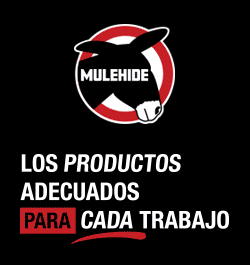

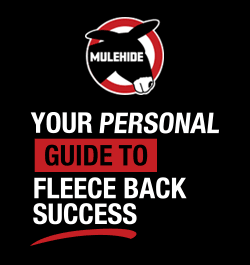
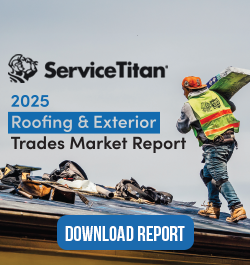







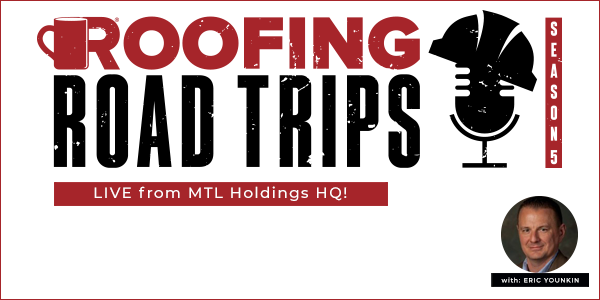
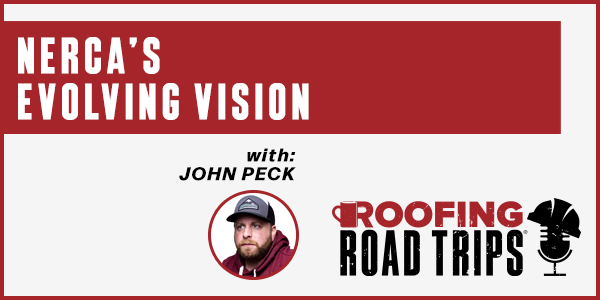
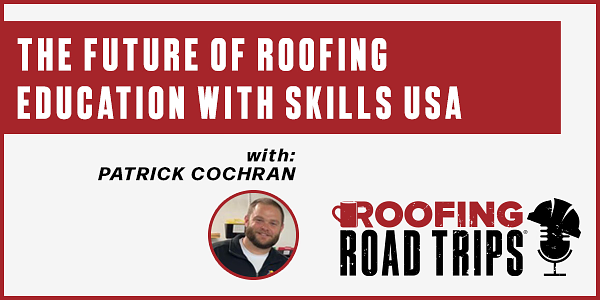
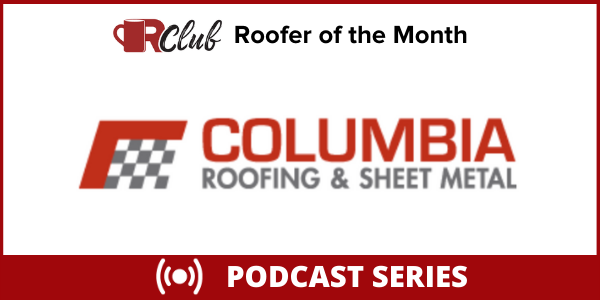






Comments
Leave a Reply
Have an account? Login to leave a comment!
Sign In